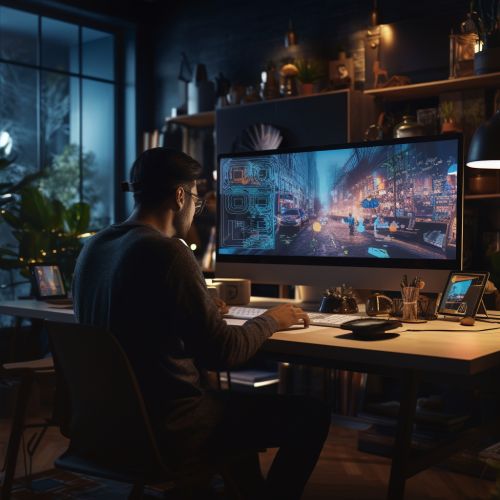Visual Design
Overview
Visual design, also known as graphic design, is a discipline that leverages visual elements to communicate messages and ideas effectively. It is a crucial aspect of communication design and is used across various industries, including advertising, publishing, digital media, and more.
Visual design is a broad field that encompasses several specialized areas, such as typography, color theory, illustration, photography, and user interface design. Each of these areas contributes to the overall effectiveness of a design and plays a vital role in conveying the intended message.


History of Visual Design
The history of visual design can be traced back to the cave paintings of prehistoric times. However, it was not until the invention of the printing press in the 15th century that visual design began to evolve as a formal discipline. The advent of the printing press led to the development of typography and layout design, which are fundamental elements of visual design.
In the 20th century, the rise of mass media and advertising led to the further evolution of visual design. The advent of digital technology in the late 20th century revolutionized the field, leading to the emergence of digital design and multimedia design.
Principles of Visual Design
Visual design is guided by a set of principles that help designers create effective and aesthetically pleasing designs. These principles include:
- Balance: Balance refers to the distribution of visual weight in a design. It can be achieved through symmetry or asymmetry.
- Contrast: Contrast is used to differentiate elements and draw attention to certain areas of a design.
- Emphasis: Emphasis involves making a particular element stand out to draw the viewer's attention.
- Proportion: Proportion refers to the size relationship between elements in a design.
- Unity: Unity is achieved when all elements in a design work together to create a cohesive whole.
Elements of Visual Design
The elements of visual design are the building blocks used to create a design. They include:
- Line: Lines can be used to divide space, guide the viewer's eye, or emphasize a particular area.
- Shape: Shapes are defined by boundaries such as lines or color, and they can be geometric or organic.
- Color: Color can evoke emotions, define importance, create visual interest, and give meaning to a design.
- Texture: Texture refers to the surface quality of a design and can add depth and visual interest.
- Space: Space refers to the area around, within, or between images or elements.
Visual Design Techniques
Visual design techniques are methods used by designers to create effective and engaging designs. These techniques include:
- Grid Systems: Grid systems provide a structured framework for a design, ensuring consistency and balance.
- Visual Hierarchy: Visual hierarchy is used to rank design elements and influence the order in which they are perceived.
- Typographic Techniques: Typographic techniques involve the use of type to enhance readability, create mood, and convey meaning.
- Color Techniques: Color techniques involve the use of color to evoke emotions, define importance, and create visual interest.
Applications of Visual Design
Visual design is used in a variety of fields and industries, including:
- Advertising: Visual design is crucial in advertising to attract attention and convey the brand's message effectively.
- Web Design: In web design, visual design is used to create a user-friendly and aesthetically pleasing interface.
- Publishing: In publishing, visual design is used in the layout and typography of books, magazines, and newspapers.
- Film: In film, visual design is used in set design, costume design, and cinematography.
